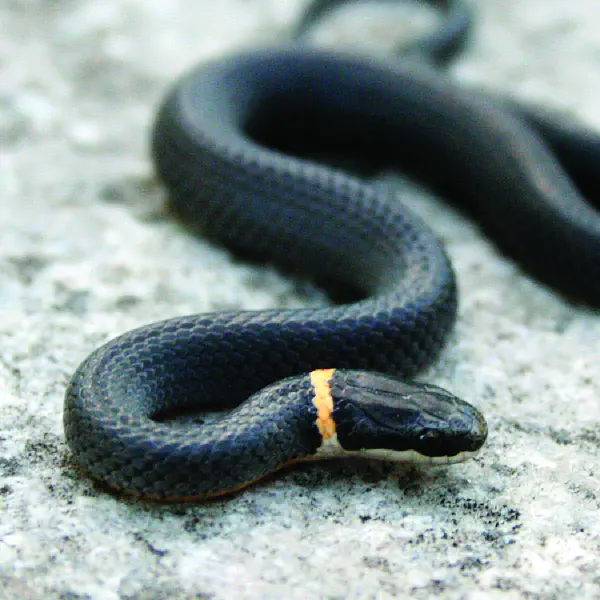Diadophis punctatus edwardsii
Table of Contents

Scientific Classification
| Kingdom: Animalia |
| Phylum: Chordata |
| Class: Reptilia |
| Order: Squamata |
| Family: Colubridae |
| Genus: Diadophis |
| Species: Diadophis punctatus edwardsii |
Conservation Status
Identifying Features
Northern ringneck snakes have black to bluish gray bodies, with a narrow pale yellow band around its neck and a matching colored belly. The scales are completely smooth and they can grow to around 10-30 inches in length.
Habitat & Range
Northern ringneck snakes can be found in damp woods or fields throughout southern parts of Canada, eastern United States, and at higher elevations in southern United States.
Behavior
Northern ringneck snakes are nocturnal and prefer to hide under rocks, leaf litter, and fallen logs. They are not commonly observed by people and will travel and hunt while still in hiding. They tend to prey on insects, amphibians, worms, and other small snakes.
In the winter, ringneck snakes will hibernate in locations such as underground burrows, leaf litter, or rotting logs.
Life Cycle
Northern ringneck snakes lay eggs around early summer that hatch in the late summer. After hatching, young ringneck snakes look essentially like smaller versions of the adult.
Featured image by Cody Hugh

